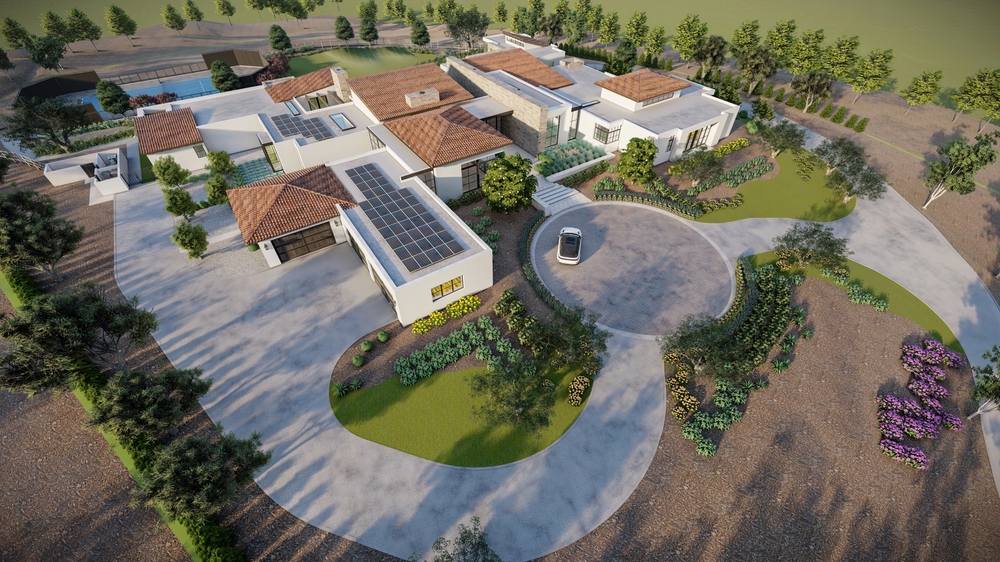Have you ever watched an animated movie and wondered, “How did they make it look so real?” Well, you’re not alone! The world of 3D animation has evolved incredibly, blurring the lines between reality and computer-generated imagery (CGI). Today, we’ll dive deep into the fascinating world of photorealism in animation, exploring the art and science behind those ultra-realistic 3D renders.
The Magic of Rendering Image and Ray Tracing
Imagine creating a scene so realistic that it’s indistinguishable from a photograph. That’s the goal of photorealistic rendering. At the heart of this process are two key concepts: rendering image and ray tracing. Rendering is the process of turning 3D models into final images or animations. Ray tracing, a crucial part of the rendering process, simulates the way light interacts with objects in a 3D environment, producing lifelike shadows, reflections, and refractions.
The Role of 3D Rendering Software
Without the right tools, achieving photorealism is like trying to paint a masterpiece with a toothbrush – possible, but not practical. Today’s 3D rendering software, like 3ds Max, Cinema 4D, and others, are the artist’s brushes, offering an array of features for creating stunning visuals. They support various rendering techniques, from scanline rendering to real-time 3D, allowing 3D artists to bring their vision to life with incredible levels of detail.
Crafting Realism: From Texture Mapping to Global Illumination
Achieving photorealism isn’t just about powerful software; it’s also about technique. Texture mapping plays a pivotal role, giving surfaces the appearance of real-world materials. Imagine the difference between a flat, single-colored wall and one with detailed brick textures – it’s night and day! And then there’s global illumination, a technique that simulates the complex way light bounces around a scene, contributing to the realism of the render.
Understanding the Rendering Times and Process
Patience is key in the world of 3D rendering. Rendering times can vary greatly depending on the complexity of the scene and the desired level of detail. Render farms, networks of computers dedicated to rendering, help speed up the process, especially for high-resolution images or animations. The rendering process itself involves several steps, starting from initial consultations (for client-based projects), through modeling and texturing, to the final rendering.
The Versatility of 3D Renders in Various Industries
3D rendering is not just limited to movies or animation. It finds its application in architectural renders, industrial design, and even in product visualization. For instance, architectural 3D visuals help home builders and clients visualize home designs before the actual construction begins. Similarly, product rendering is an invaluable tool for products design, allowing for detailed previews of items before they are manufactured.
The Evolution of Photorealistic Rendering
Photorealism in animation has come a long way. The history of 3D rendering is marked by continual advancements in technology and techniques, from the early days of simple wireframes to today’s complex, photorealistic scenes. The journey reflects a constant striving for more realistic, more engaging visual representations.
Bringing it All Together: The Art of Photorealism
Ultimately, creating photorealistic renders is an art form. It requires a balance of technical skill and creative vision. 3D artists must not only understand the intricacies of rendering software and techniques but also have a keen eye for detail, composition, and storytelling. It’s about using technology not just to create a realistic image, but to evoke emotions and tell a story.
Conclusion
The journey to creating ultra-realistic 3D visuals is both complex and fascinating. It combines the precision of science with the creativity of art, utilizing advanced rendering techniques, and powerful software tools. As technology continues to evolve, so too will the capabilities and applications of photorealistic 3D animation, continually pushing the boundaries of what’s possible.
FAQs
What is the most important factor in achieving photorealism in 3D architectural renders?
The most important factor is the accurate simulation of lighting and material properties, which involves techniques like ray tracing and texture mapping.
How long can the architectural rendering process take for a photorealistic image?
Rendering times can vary from a few hours to several days, depending on the complexity of the scene and the level of detail required.
Can 3D rendering be used for purposes other than movies and games?
Absolutely! 3D rendering is widely used in architectural visualization, product design, and even in educational simulations.
What is global illumination in the context of 3D rendering?
Global illumination is a rendering technique that simulates the way light bounces off surfaces and objects, contributing to the overall realism of the scene.
Are there specific software tools used for photorealistic rendering?
Yes, tools like 3ds Max, Cinema 4D, and Blender are popular among professionals for creating photorealistic renders.


